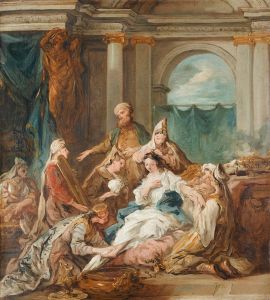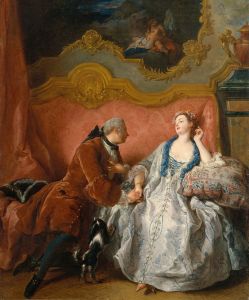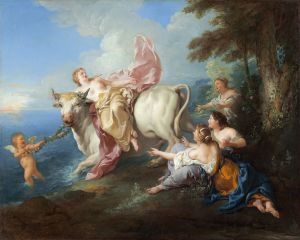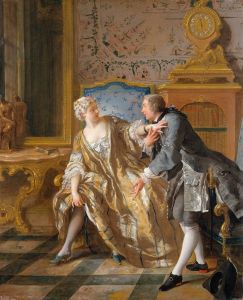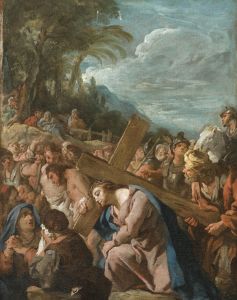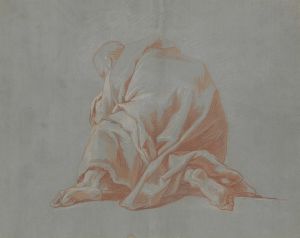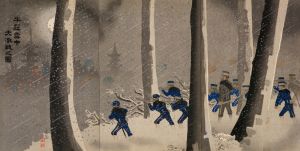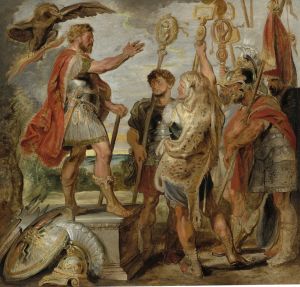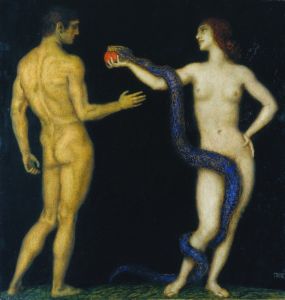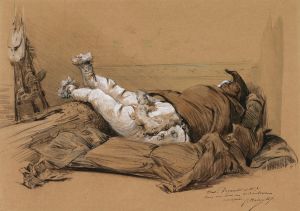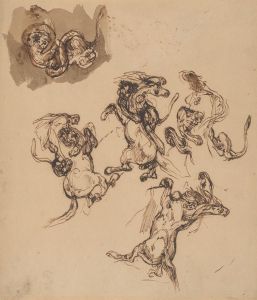
Le Combat des soldats nés des dents du serpent
A hand-painted replica of Jean-François de Troy’s masterpiece Le Combat des soldats nés des dents du serpent, meticulously crafted by professional artists to capture the true essence of the original. Each piece is created with museum-quality canvas and rare mineral pigments, carefully painted by experienced artists with delicate brushstrokes and rich, layered colors to perfectly recreate the texture of the original artwork. Unlike machine-printed reproductions, this hand-painted version brings the painting to life, infused with the artist’s emotions and skill in every stroke. Whether for personal collection or home decoration, it instantly elevates the artistic atmosphere of any space.
Jean-François de Troy was a prominent French Rococo painter known for his historical and genre scenes. One of his notable works is "Le Combat des soldats nés des dents du serpent" (The Battle of the Soldiers Born from the Serpent's Teeth). This painting is an exemplary piece that showcases de Troy's skill in depicting dynamic action and complex compositions, characteristic of the Rococo style.
The painting illustrates a scene from Greek mythology, specifically the story of Cadmus, the legendary founder of Thebes. According to myth, Cadmus was instructed by the Oracle of Delphi to follow a cow and establish a city wherever it lay down. During his journey, Cadmus encountered a dragon, which he slew. Following Athena's advice, he sowed the dragon's teeth into the ground, from which sprang a group of fierce warriors known as the Spartoi. These warriors immediately began fighting each other until only five survived, who then helped Cadmus build the city of Thebes.
De Troy's painting captures the chaotic and violent emergence of these warriors. The composition is filled with movement and tension, as the newly born soldiers engage in combat. The artist's use of light and shadow adds depth and drama to the scene, highlighting the muscular forms and intense expressions of the figures. The background is typically Rococo, with its soft, swirling clouds and lush landscape, providing a stark contrast to the violence in the foreground.
Jean-François de Troy was born in Paris in 1679 into an artistic family; his father, François de Troy, was also a painter. Jean-François trained under his father and later traveled to Italy, where he was influenced by the works of the Italian masters. Upon returning to France, he became a member of the Royal Academy of Painting and Sculpture and gained recognition for his historical paintings and tapestry designs.
"Le Combat des soldats nés des dents du serpent" reflects de Troy's mastery of narrative painting, where he successfully combines mythological themes with the elegance and decorative qualities of the Rococo style. His ability to convey complex stories through vivid imagery and dynamic compositions made him a sought-after artist in his time.
The painting is an excellent example of how 18th-century artists interpreted classical mythology, blending it with contemporary artistic trends to create works that were both educational and visually appealing. De Troy's work remains significant for its contribution to the Rococo movement and its influence on subsequent generations of artists.
Today, Jean-François de Troy's paintings, including "Le Combat des soldats nés des dents du serpent," are appreciated for their historical significance and artistic merit. They offer insight into the cultural and artistic milieu of 18th-century France, reflecting the tastes and interests of the period.







